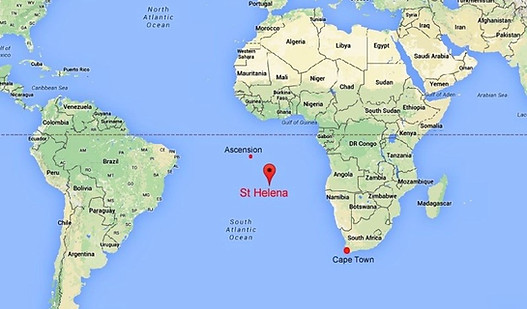Heritage Projects
Liberated AfricaN Establishment
"A visit to a full-freighted slave ship arriving at St. Helena is not easily to be forgotten; a scene so intensified in all that is horrible that it almost defies description. The vessel, scarcely a hundred tons at most, contains perhaps little short of a thousand souls, which have been closely packed, for many weeks together, in the hottest and most polluted of atmospheres. I went on board one of these ships as she cast anchor off Rupert’s Valley, and the whole deck, as I picked my way from end to end, in order to avoid treading upon them, was thickly strewn with dead, dying, and starved bodies …"
Colonial Engineer John Melliss – 1861

st helena and the trans-atlantic slave trade
Situated in the South Atlantic Ocean – between Brazil, South America and Angola, West Africa – St Helena’s location was favourable as a provisioning station and rendezvous point for ships on their way to and from the East Indies. In 1659, St Helena was settled by the English under the auspices of the East India Company. Shortly thereafter, St Helena’s involvement in the slave trade commenced, as workers were required for the Company’s plantations.
In the years following Abolition in 1807, St Helena slowly moved towards emancipation of the island’s slave population. In 1840, the Royal Navy began patrolling the Atlantic, capturing slaver ships in an attempt to suppress the ongoing illegal slave trade. Between 1840 and 1872, 450 ships carrying more than 26,000 enslaved Africans were captured by the Royal Navy West Africa squadron and brought to St Helena, where the slaves were liberated and the crews put on trial.
The majority of the former slaves brought ashore were housed in a ‘Liberated African Establishment’ set up in Rupert’s Valley. The Establishment acted as a receiving centre, hospital and quarantine zone. Tragically, more than 8,000 men, women and children died – mostly from disease – shortly after their liberation. Most were hastily interred in two burial grounds in the Valley. These unmarked burial grounds are considered among the most significant physical remaining trace of the Trans-Atlantic Slave Trade in the world.

Map Showing the location of St Helena in the South Atlantic Ocean.

Tents that housed the enslaved people ‘freed’ from the slave ships | Credit: Dr A Pearson

In August 2022, excavated human remains were respectfully reinterred by members of the St Helena community in coffins made by students at Prince Andrew School.
Liberated African Burial Grounds
In 2008, archaeological excavations in advance of the construction of the island’s first airport unearthed 325 intact human skeletons. In addition, a large quantity of disarticulated bone and numerous artefacts – including name tags, metal bracelets, beads, necklaces and wristbands – were uncovered. In 2022, the community respectfully re-interred the remains.
The re-discovery of the liberated African burial grounds led to the publication of a Council for British Archaeology monograph ‘Infernal Traffic: Excavation of a Liberated African Graveyard in Rupert’s Valley, St Helena’ and the organisation of ‘Liberty Bound’, a 2014-2015 exhibition at the International Slavery Museum in Liverpool which described the Rupert’s Valley burials as ‘one of the most important archaeological finds of recent times in one of the most remote places on earth’.
No. 1 Building
The only surviving structure from the Liberated African Establishment is ‘No. 1 Building’, originally constructed in 1865 as an accommodation block to house up to 80 former slaves.
The UK-St Helena Heritage Trust is working in partnership with St Helena National Trust and the Liberated African Advisory Committee to restore No. 1 Building and develop it into a modern interactive interpretation centre. The objectives of this project are to:
-
Memorialise the liberated Africans through acknowledgement of the tragedy of slavery;
-
Educate future generations about the lingering consequences of the centuries-long enslavement of and trade in Africans supplied to the colonies of the Americas, the Caribbean, and Europe;
-
Enshrine the legacy of the liberated Africans whose untold stories, memories and contribution to humanity changed St Helena and the world.
More more information on our plans, and to find out how you can help, please see here.

No. 1 Building – the only surviving structure from the Liberated African Establishment in Rupert’s Valley




